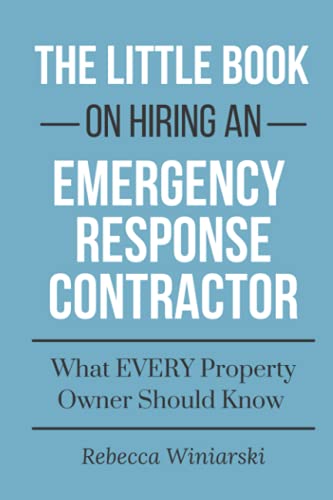When a tree unexpectedly comes crashing down or starts leaning dangerously, it’s easy to feel overwhelmed. Whether it’s a result of a storm, decay, or an unfortunate accident, dealing with a tree emergency isn’t something most of us are prepared for. That’s where hiring the right professionals makes all the difference.

I’ve learned that finding a reliable emergency tree removal service isn’t just about speed—it’s about ensuring safety and preventing further damage. With so many options out there, knowing what to look for can save time, money, and a lot of stress.
What Is Emergency Tree Removal?
Emergency tree removal addresses urgent situations where trees create immediate dangers or risks. Common scenarios include trees falling onto homes, blocking roads, or leaning precariously after storms. These situations can threaten safety, property, and accessibility if not handled quickly.
Professional emergency tree removal services are equipped to assess the situation and implement a safe removal process. They use specialized tools such as cranes, chainsaws, and rigging systems to manage large or hazardous trees without causing additional damage. Trained crews ensure surrounding structures, utility lines, and landscaping are protected.
Timing is critical in emergencies. Delayed action can escalate risks, such as structural damage from prolonged pressure or further disturbance in unsafe weather. By contacting emergency removal experts early, I minimize potential hazards and restore safety efficiently.
Why You May Need Emergency Tree Removal Services
Emergency tree removal services address critical situations where trees pose threats to safety or property. Recognizing the reasons for these services helps identify when professional help is essential.
Storm Damage
Severe storms often lead to falling or leaning trees that create hazardous conditions. Strong winds, heavy rain, or snow can weaken trees, causing branches to break or entire trees to collapse. For instance, a tree might fall on a roof or powerline after a storm. Prompt removal restores safety and prevents worsening damage.
Dangerous Tree Conditions
Structural issues in trees, such as decay, pest infestations, or weak root systems, significantly increase the risk of sudden collapse. Trees with visible cracks, hollow trunks, or excessive leaning are especially dangerous. Removing compromised trees eliminates threats that could result in accidents or injuries.
Immediate Property Threats
Trees that obstruct driveways, block access to buildings, or endanger nearby structures often require emergency attention. For example, a large branch might fall across a vehicle or a tree might lean dangerously close to a home. Rapid removal ensures property remains usable and reduces further costs linked to damage or repairs.
How To Choose The Right Emergency Tree Removal Service
Choosing the right emergency tree removal service makes a major difference in safety and efficiency. I focus on a few key factors to find the best professionals for the job.
Checking Credentials And Experience
I confirm that the service has certified arborists with industry-recognized credentials, such as those from the International Society of Arboriculture (ISA). Experience matters too; a company with at least five years of handling hazardous tree removals is usually reliable. I also look for customer reviews and case-specific success stories to evaluate their expertise.
Ensuring 24/7 Availability
Emergency situations don’t follow a schedule, so I check if the service operates 24/7. Fast response times, ideally within an hour or two, are critical during urgent scenarios. I review their service guarantee to understand how they manage emergencies outside regular business hours.
Insurance And Liability Coverage
I verify that the company carries valid liability insurance and workers’ compensation. This protects me from financial responsibility for accidental damages to my property or injuries sustained by workers during the job. A reputable service readily provides proof of coverage on request.
The Costs Of Emergency Tree Removal
Emergency tree removal costs can vary significantly. Understanding what affects pricing and how to get precise quotes helps manage expectations.
Factors That Influence Pricing
Several factors play a role in pricing emergency tree removal.
- Tree size and type: Larger trees or those with dense, heavy wood, like oak, typically increase costs due to extra labor and equipment requirements.
- Location accessibility: Trees close to structures or in hard-to-reach areas demand specialized tools and careful planning, raising costs.
- Urgency: Services requested during off-hours or in extreme emergencies may lead to higher fees due to immediate response needs.
- Hazard level: Situations involving power lines, unstable trees, or environmental risks require additional safety precautions, impacting the price.
- Cleanup and disposal: Debris removal and wood disposal often come with additional charges beyond the cutting and removal process.
Getting Accurate Quotes
I recommend contacting multiple companies to receive precise quotes.
- Detailed assessment: Provide specific details about the tree’s size, location, and condition to receive an accurate cost estimation.
- In-person evaluation: Most professionals offer on-site inspections to better understand complexities and give a more reliable quote.
- Breakdown of costs: Request a clear breakdown of services, including removal, cleanup, or any added fees, to avoid unexpected expenses.
- Verified credentials: Ensure the company includes proof of insurance and certifications in their evaluation process.
Tips For Avoiding Emergencies In The Future
Preventing tree emergencies starts with proactive care and attention to potential risks. Consistent efforts can help maintain safety and protect your property from unexpected issues.
Regular Tree Maintenance
I approach tree maintenance as an essential step in preventing emergencies. Pruning helps remove weak, overgrown, or damaged branches that could fall during storms. Scheduling inspections every 6-12 months ensures trees stay healthy and structurally sound. Applying mulch, watering during dry periods, and fertilizing promote long-term growth and resilience. For larger or older trees, hiring certified arborists to handle maintenance guarantees professional care and protects surrounding structures.
Identifying Potential Risks Early
I take time to assess each tree for warning signs of potential hazards. Leaning trunks, significant cracks, or splitting branches indicate structural instability. Discolored or sparse foliage and visible decay around the roots or trunk signal disease or rot. If trees grow too close to power lines, buildings, or driveways, their placement presents immediate dangers. Consulting experts when identifying these risks avoids delays and allows proper action before emergencies occur.
« Essential Tips for Finding Specialists for Hardscaping Jobs to Transform Your Outdoor Space What to Expect from a Landscape Consultation: Your Guide to Planning the Perfect Outdoor Space »
Conclusion
Hiring the right emergency tree removal service can make a stressful situation much more manageable. It’s all about acting quickly, choosing experienced professionals, and staying proactive with tree care to avoid future issues. By taking these steps, you’ll protect your property, save time, and ensure everyone’s safety. When emergencies strike, having a trusted service you can count on makes all the difference.
















